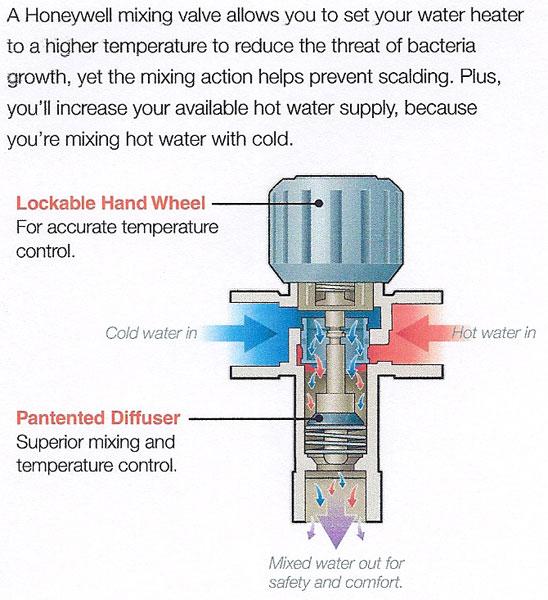Hello,
My whirlpool tub runs out of hot water and I was advised by the water-heater manufacturer(AOSMITH Vertex) to install a thermostatic mixing valve and then set the water heater to the highest setting. They said this would also be more energy-efficient.
Now, I'm not a plumber but I do like to take on DIY projects. Can you please share a good brand Thermostatic Mixing Valve that is easy to install and does not require complex techiques? I would love to try installing one myself. Also a helpful video of the process would be greatly appreciated. Any help is appreciated!
Thanks,
Tilley
My whirlpool tub runs out of hot water and I was advised by the water-heater manufacturer(AOSMITH Vertex) to install a thermostatic mixing valve and then set the water heater to the highest setting. They said this would also be more energy-efficient.
Now, I'm not a plumber but I do like to take on DIY projects. Can you please share a good brand Thermostatic Mixing Valve that is easy to install and does not require complex techiques? I would love to try installing one myself. Also a helpful video of the process would be greatly appreciated. Any help is appreciated!
Thanks,
Tilley

